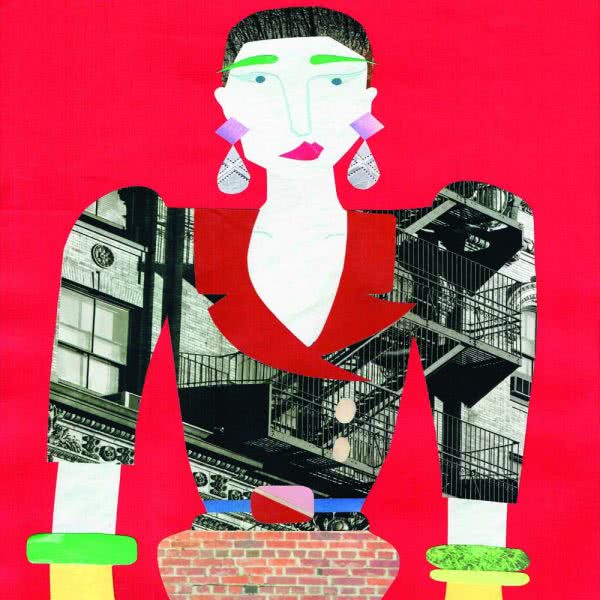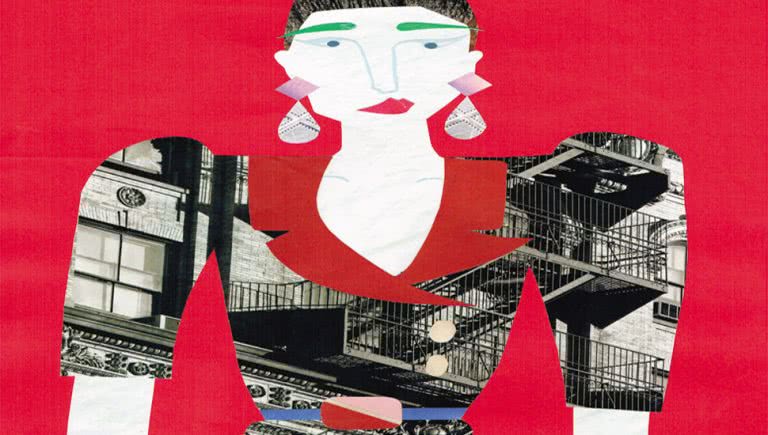Geordie Gray looks back on the stunning history of the power suit, basking in all of its gender-defying glory.
(Artwork by Alecia John @aleciamakes)
2019 has witnessed a renaissance of the sartorial symbol of female empowerment, the power suit. The power suit and female liberation have been intrinsically linked since The Suffragettes of the 1920s.
Whilst one often associates the power suit with permed-up 80s caricatures of the working woman: fuschia blush, monumental shoulder pads and double-breasted jackets à la Melanie Griffith in Working Girl, upon closer inspection, it is evident that the DNA of the power suit runs deep in the history of female emancipation.
This article was recently featured in The Brag’s Power Edition, to celebrate the rich history of the power suit. We wanted to take a look at five moments that shaped the glorious narrative of the power suit, and so here it is, five moments that undeniably made history, and looked devilishly good doing so:
Grace Jones, Nightclubbing Armani Suit
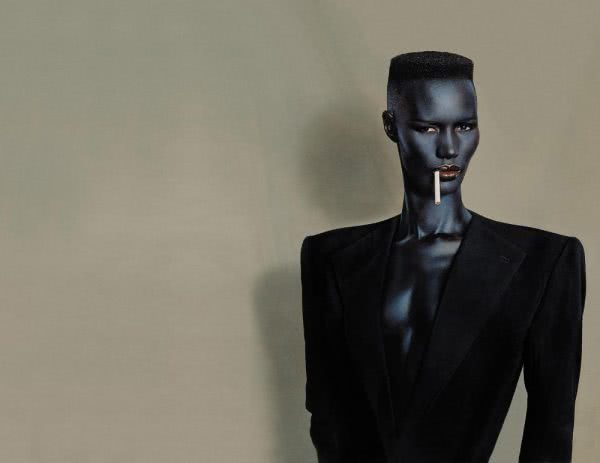
No one in history has worn a suit better than Grace Jones. The androgynous revolutionary has been redefining beauty and skewing gender norms her entire career. The Armani suit Jones sported on the cover of her career-defining 1981 record Nightclubbing perfectly encapsulated her power and defiance. Sharply structured, over-padded shoulders that accentuate her impossibly sculpted decolletage.
Love Music?
Get your daily dose of metal, rock, indie, pop, and everything else in between.
Collaborator and photographer Jean-Paul Goude: “It was about extremity, playing on her masculinity. Grace simplified to the maximum.”
Lady Gaga, Marc Jacobs Suit, Women in Hollywood event
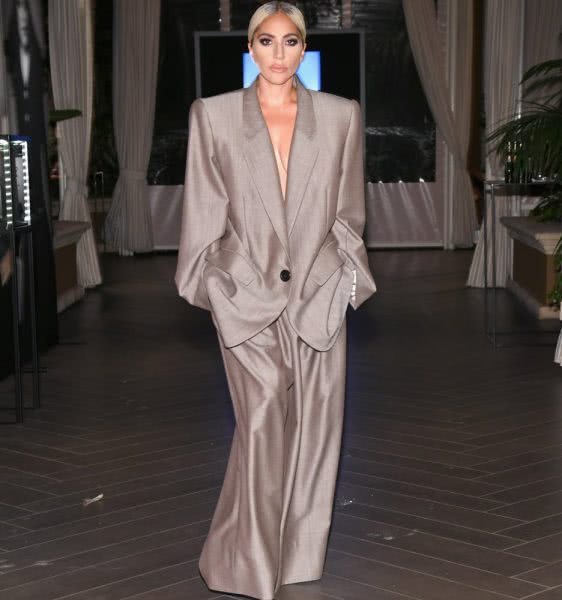
Last year, Lady Gaga received an honour at the 25th annual Women in Hollywood evening. Gaga took the stage to deliver a poignant, personal speech, detailing her experience with sexual assault, mental health, and discovering her inner strength. The speech was an important cultural marker of female resilience in the post-Weinstein era.
Gaga has always used fashion as a vessel for didacticism. During the ceremony, she detailed that she tried on dozens of dresses, all of which filled her with unease. It was the Marc Jacobs Spring 2019 suit that she felt acted as a visual cohort to her message.
“As a sexual assault survivor by someone in the entertainment industry, as a woman who is still not brave enough to say his name, as a woman who lives with chronic pain, as a woman who was conditioned at a very young age to listen to what men told me to do, I decided today I wanted to take the power back. Today I wear the pants.”
Le Smoking Suit, Yves Saint Laurent
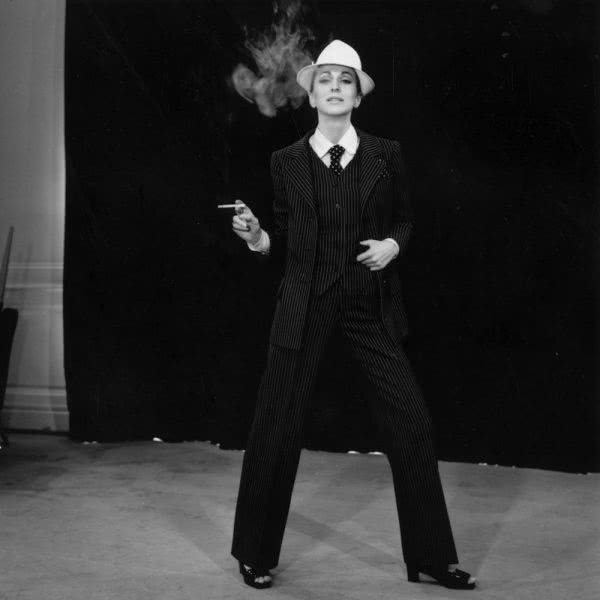
When Yves Saint Laurent introduced the tuxedo-influenced Le Smoking Suit to the world in 1966, it reshaped how society viewed sexuality in a way that still permeates runways to this day.
Le Smoking Suit was subversive, divisive and rejected by critics upon its debut. New York Times critic Gloria Emerson described the collection as “lumpy” and “outdated”, professing
that Saint Laurent “strains too hard to convince the world he is hand-in-hand and eye-to-eye with the very young.”
Despite this, Le Smoking Suit resonated with generations of It Girls and has been sported by everyone from Emma Watson and Megan Fox, to Catherine Deneuve and Betty Catroux. Perhaps most famously, a white interpretation of Le Smoking Suit was worn by Bianca Jagger when she married Mick in May 1971.
New York socialite Nan Kempner perfectly encapsulated the rebellious spirit of Le Smoking Suit after she was refused entry into La Côte Basque in New York for wearing the tuxedo. In protest, she removed the bottom half of the suit and swaggered into the restaurant wearing the jacket as a thigh-length mini dress.
Le Smoking remained a core fixture in Saint Laurent up until the close of the couture line in 2002. When reflecting on the success of the suit, Yves Saint Laurent famously said: “For a woman, Le Smoking is an indispensable garment with which she finds herself continually in fashion, because it is about style, not fashion. Fashions come and go, but style is forever.”
Janelle Monáe
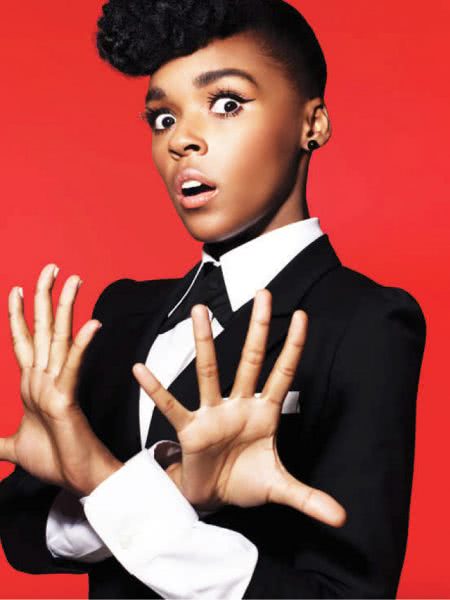
Janelle Monáe established herself a suit-donning juggernaut from day one. It was her 2010 music video for ‘Tightrope’ that first showcased her penchant for sophisticated and perfectly tailored suits; the cropped leg tuxedo, bow tie, and impossibly voluminous pompadour have been etched into my mind’s eye forever. Monochromatic suits very quickly became synonymous with Monáe’s brand.
Back in 2013, Monáe explained that her decision to wear these monochrome suits was a homage to her working class roots.
“My mom and dad wore uniforms, whether they were janitors or post office employees. They worked hard to make sure we had clothes on our backs and food in our mouths. I never, ever want to forget them, so I always wear my uniform—a jacket and pants in black-and-white — to pay homage to them and to remind myself I have work to do.”
Katharine Hepburn
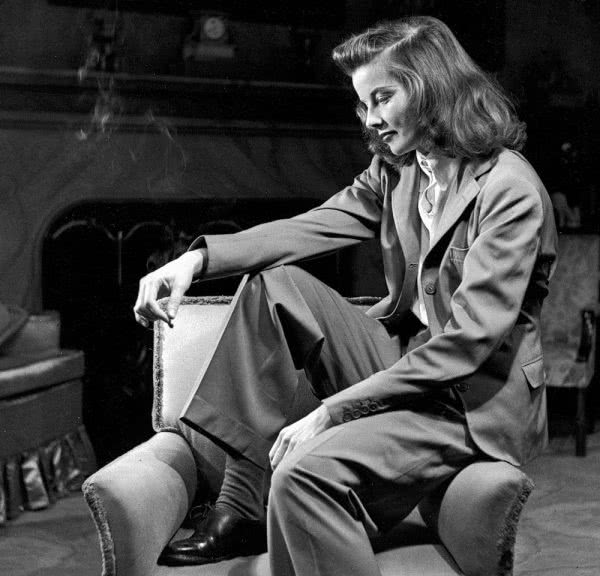
Katharine Hepburn was a trailblazer in the truest sense. The Hollywood heavyweight chose to don menswear-inspired suits in an era where women were arrested if they wore pants in public, and detained for “masquerading as men.”
Hepburn was often considered “too masculine” and “too rough” and directors found her too difficult to cast opposite men. This did not sway her from dressing in her signature epicene manner.
“I have not lived as a woman. I have lived as a man,” Hepburn shared with Barbara Walters in 1981. “I’ve just done what I damn well wanted to and I made enough money to support myself, and I ain’t afraid of being alone.”
